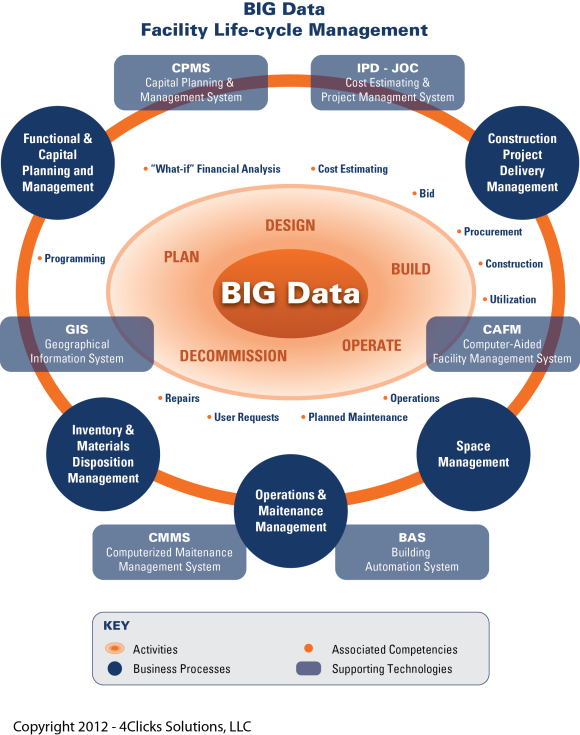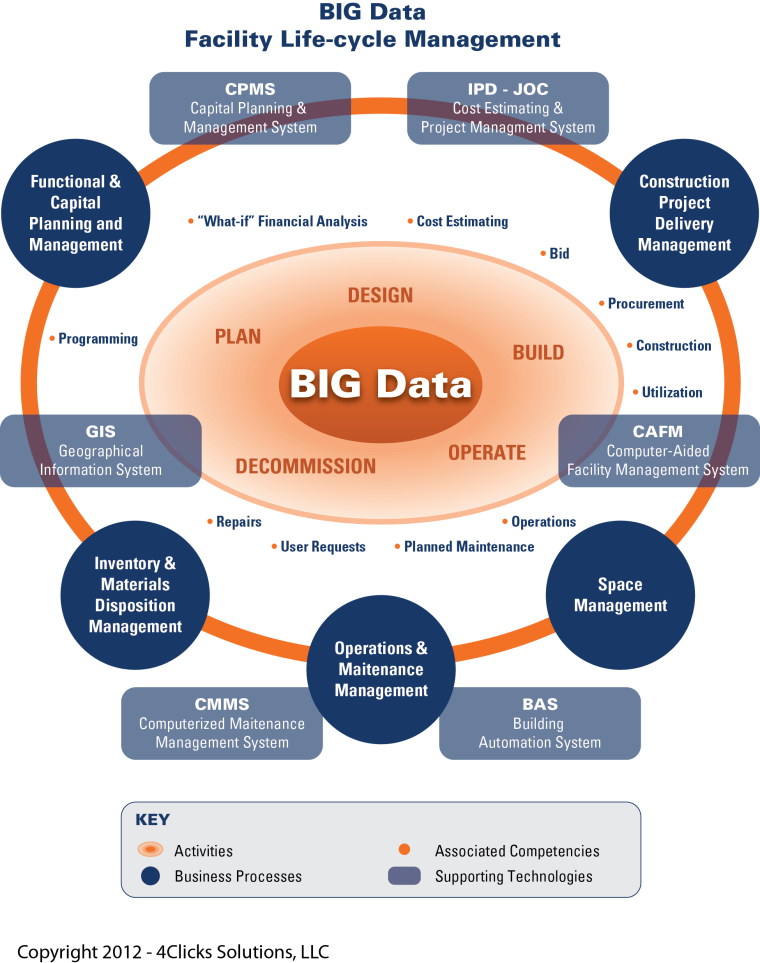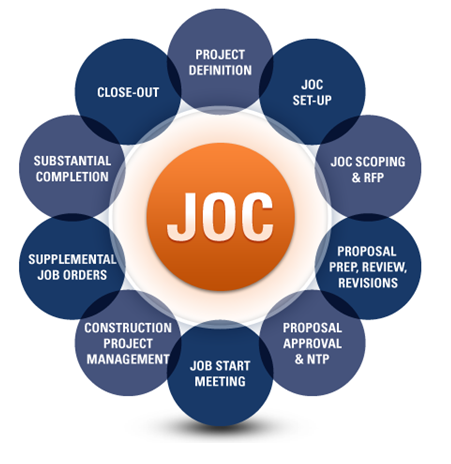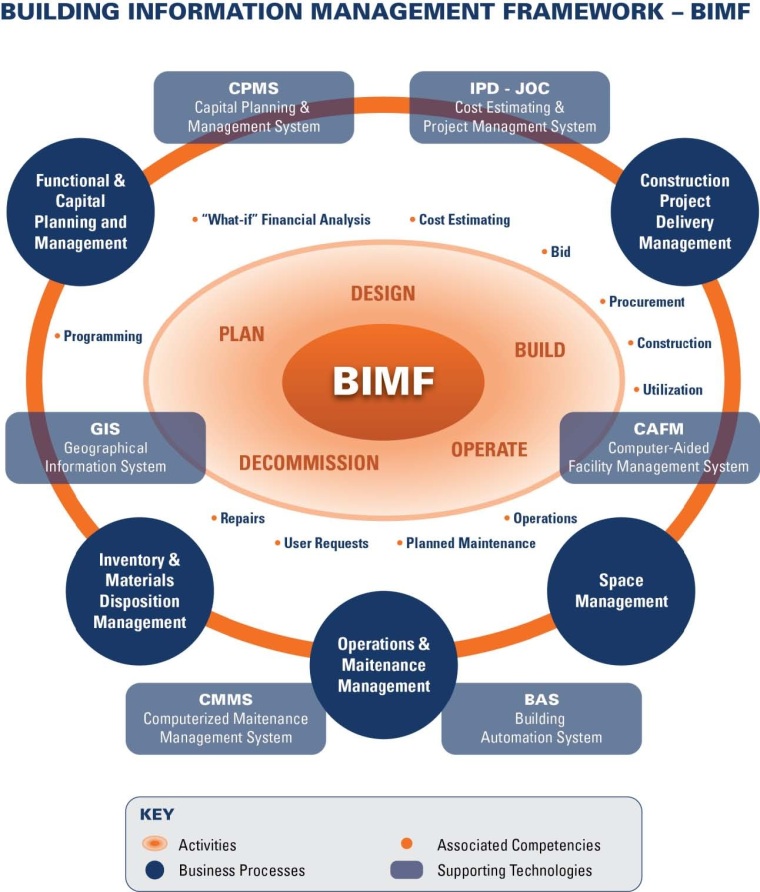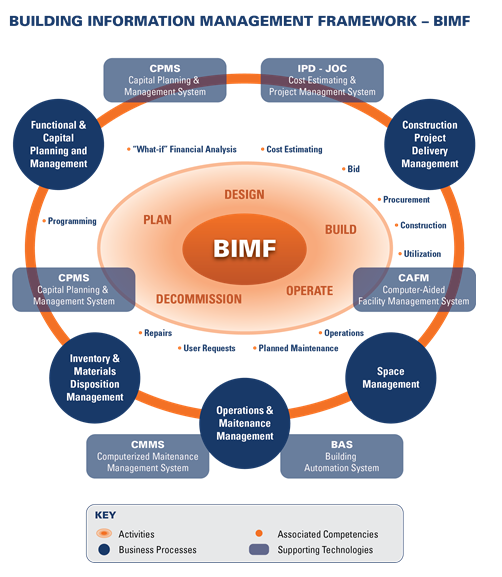LEED Certification, and LEED in general has been a GREAT marketing tool. That said, should LEED be a requirement? Is LEED cost effective? Should LEED be modified?
The below letter clearly states that cost will INCREASE should the GSA move away from LEED? How can that be? What costs would increase? Is there no better way for GSA to meet sustainability requirement than via LEED?
Take a look at the letter and please post you comments.
July 25, 2012
Acting Administrator Daniel Tangherlini
U.S. General Services Administration
One Constitution Square
1275 First Street, NE
Washington, DC 20417
Dear Acting Administrator Tangherlini,
The U.S. General Services Administration (GSA) is to be commended for its leadership in improving energy and environmental performance across its federal building portfolio. The recently released sustainability and energy “scorecard” by the Office of Management and Budget (OMB) demonstrates just how successful GSA has been at reducing costs, improving efficiency and eliminating waste.
GSA earned the highest rating in all categories in the 2011 sustainability scorecard released from the Office of Management and Budget (OMB).
GSA reduced emissions from federal buildings more than 20 percent compared with 2008. That incredible reduction led all federal agencies.
GSA is ahead of schedule in reducing its potable water and electricity use.
These efforts are paying off in real terms. According to the OMB, investments in efficiency over the last four years are expected to save $18 billion in energy costs over the life of the projects.
In an effort to continue this success, GSA is evaluating the building rating tools at its disposal, as required by the Energy Independence and Security Act of 2007. LEED is the most widely used high‐performance building rating system in the United States. The private sector uses LEED to both verify and communicate the quality of high performance buildings. If GSA, as the “landlord of the federal government,” were to require or use something else, it would add cost to the building and leasing process across the building industry. We are not in favor of adding cost.
Again, we commend your agency for its success in reducing the operating cost and impact of the federal building stock. We support your continuation of the rating tool evaluation process and focus on the usability, market acceptance, and effectiveness of rating tools rather than distractions focused on a single issue.
Thank you for your consideration of our views.
106 Greenway
2 B Green Profitably
2M Design Consultants, Inc.
32BJ SEIU
360 Architecture
3Degrees
4240 architecture
7group, LLC
Above and Beyond Energy
Abruña & Musgrave, Architects
Ackerstein Sustainability LLC
Acme Paper and Supply Co, Inc.
ActiveWest Builders
ADDS, SRL.
Adomatis Appraisal Service
Advanced Comfort Solutions, Inc.
Advanced Furniture Services
Advanced Home Energy Solutions
Aedify
Aedis Ince
Affiliated Engineers, Inc.
AGR Consulting
AHA Consulting Engineers, Inc.
Ahold USA Retail
Airco Commercial Services, inc.
Airfresh Inc.
Alabama Green Building Solutions & SLS Construction
Alaska Thermal Imaging LLC
Albertin Vernon Architecture LLC
Albuquerque Old School
Alfandre Architecture, PC
Alicia Ravetto Architect PA
All Home & Energy Services LLC
Allcare Maintenance Services
Alliance Corporation
Alliance Environmental & Natural Systems Utilities, LLC
Alliance for Environmental Sustainability
Allied Construction Services LLC
Alpar Architectural Products
Alt Breeding Schwarz Architects
Alterna Corp.
Alternative Energy Systems
Alternative Solutions
AlturaSolutions Communications
Alvin E. Benike, Inc.
Alvin Holm AIA Architects
Balfour Beatty Construction
Banister Homes, Inc.
Bank of America
Barbara A. Campagna/Architecture + Planning PLLC
Barras Architects
Bath Engineering Corporation
Bay City Supply
Benefect Corp
Benefield Richters Company
Benson Woodworking Company, Inc.
Bernardon Haber Holloway Architects PC
Bernards
Berner International Corp.
Better World Group
Big Ass Fans
Big-D Construction Corp
Big-D Signature
Biositu, LLC
Bird & Kamback Architects
Bird Group
BKM Construction LLC
Black United Fund of Illinois
Blackmon Rogers Architects LLC
Blue Camas Consulting Ltd.
Blue Marble LLC
Blue Moon Enterprises
Blue Sea Development Company, LLC
Blue Water Studio
Bluegill Energy
BlueGreen Alliance
Bluestone Building, LLC
BMI Mechanical, Inc.
BNP Media
Boone Gardiner Garden Center
Boreas Arquitectos
Bork Architectural Design, Inc.
Boston Global Investors
Boston Properties
Boston Redevelopment Authority
Brailsford & Dunlavey, Inc.
Brandywine Realty Trust
BRAZEN Architecture INC
BRC Acoustics & Audiovisual Design
Breedlove Land Planning, Inc.
Brewer Ingram Fuller Architects Inc.
Brewery Vivant
Cascadia Green Building Council
Cassidy Turley Commercial Real Estate Services
Catalyst Partners
Catherine Hall Designs, LLC
CBRE Commercial Real Estate Services
CCI Mechanical, Inc.
Celilogardens
Center for Maximum Potential Building Systems
Center for Sustainable Building Research
Cerama-Tech of Southern Nevada
Certified Building Analysis LLC
Chambersburg Waste Paper Co
Chapman Construction / Design
Chartier Redevelopment Group
Chatham County Commission
CHB Industries, Inc.
Chicago Regional Council of Carpenters
Chidester Engineering, PLLC
Choate Construction Company
Christie Development Services
Christine Ervin/Company
Chula Ross Sanchez
Citizens for Pennsylvania’s Future
City of Atlanta, Office of Sustainability
City of Chicago
City of Cincinnati
City of Grand Rapids
City of Philadelphia
City of San Antonio, Office of Environmental Policy
City of San Francisco, Department of the Environment
City of Santa Barbara, Office of the County Architect
City of Santa Monica Green Building Program
City of Tempe
City of Winston-Salem, Office of Sustainability
Clark Nexsen, Architecture and Engineering
Clayco, Inc.
Clean Age, LLC
Clean Energy Coalition
Clean Energy Finance and Investment Authority
Cleaning First Impressions
Clivus Multrum, Inc.
Clothing Matters
CMA Architects & Engineers LLP
Coastal Building Maintenance
Coastal Therapy
Coldwell Banker/Schneidmiller Realty
Dale Corporation
Dale Partners Architects P.A.
Davis Davis Architects
Davis Energy Group
dbdesign
DCP Marketing Services LLC
DECOLights, Inc
DeFeo Associates
Delaware Valley Green Building Council
Delphi Corporation
DERBIGUM Americas, Inc.
Desert Moon Productions, Inc.
Design AVEnues LLC
designis
Development Center for Appropriate Technology
Development Management Associates, LLC
Devine Brothers Inc
Dewberry Architects Inc.
Diversified Design Group LLC
Diversified Energy Services
DJ Construction Co. Inc.
DNV Business Assurance
Dominican Republic Green Building Council
Donia & Associates, Inc.
Donnelley Energy Solutions
Doo Consulting, llc
Dore Property Ventures LLC
Dover, Kohl & Partners Town Planning
DPR Construction
Drawing Conclusions LLC
Dreyfuss & Blackford Architects
Drysdale Energy
Dunlap & Partners Engineers
Dunlop Development, Inc.
DVA Home Improvement, LLC
DVL Automation
DwellSmart
E.W. Dunn
e2 Homes, Inc.
e3 Bank
E3 Building Sciences
E3 INNOVATE, LLC
E3 Regenesis Solutions, Inc.
e4, Inc.
EA Buildings
Early New England Home Designs
Energy Inspectors Corporation
Energy IQ
Energy Master & Environmental Solutions
Energy Matters
Energy Opportunities, Inc.
Energy Upgrade Services, Inc.
Energy Wise Solutions Inc
EnergyLogic Inc.
Enermodal Engineering
Engineered Representation, Inc.
Engineered Tax Services
Engineering Services
Ennead Architects, LLP
Enovative Group, Inc.
Enterprise Green Communities
Environamics, Inc.
Environmental Concepts Company
Environmental Dynamics, Inc.
Environmental Planning Associates
Envision Design
EnVision Realty Services
ES2, Inc
ETC Group
Ethos Sustainable Finishes
Everblue
Everest Properties
Everyday Green
Evolution Partners Real Estate Advisors
EwingCole
Exact Solar
Excel Dryer Inc.
Exoterra | Architects+Consultants
Exp U.S. Services, Inc.
Facilities Design Group
Farr Associates
Faulhaber Engineering & Sustainability
FBG Service Corp.
Fenestar
Fergus Garber Young Architects
Ferrand ACS
FiberAmerica
FILARSKI/architecture+planning+research
Filmop USA
Final Air Balance Co., Inc.
Fireman’s Fund Insurance Company
First Community Housing, Inc.
Golangco Global
Goodwyn Mills Cawood
GR Planning
Gray Construction
Green Advantage, Inc.
Green and Profitable
Green Building Certification Institute
Green Building Consulting
Green Building Education and Services, LLC
Green Building Education Services
Green Building Pages
Green Building Services Inc.
Green Capital Advisers
Green Chapps, LLC
Green Dinosaur, Inc.
Green Earth PR Network
Green Education Foundation (GEF)
Green Education Inc.
Green Energy Solutions
Green Hive Foundation
Green Ideas, Inc.
Green Innovative Design
Green Insight, LLC
Green Property Funds LLC
Green Schools Inc.
Green Seal, Inc.
Green Stone Consulting
Green Street Development Group
Green Street Properties
Green Works Corp.
Greenbank Associates
GreenBeams
GreenCE, Inc.
GreenDream Enterprises
Greeneconome
Greener Country
Greenform
Greenformation
Greenhut Construction Company
Greenpeace
GreenShape LLC
GreenWizard
Group 70
Group Mackenzie Inc.
Group14 Engineering
Grundfos Pumps
HOK
Holder Construction Company
HOLOS Collaborative
Homage Design
Home Energy Group, LLC
HomeGreen
Horizon Residential Energy Services Maine, LLC
HSB Architects & Engineers
Humann Building Solutions
Hunzinger Construction
Hutton Architecture Studio
HW Davis Construction, Inc.
Hyland Fisher – Architect
IBS Advisors, LLC
IceStone, LLC
ICLEI Local Governments for Sustainability USA
iLiv
Imery & Co, LLC
Impact Infrastructure, LLC
In Balance Green Consulting
Incite Directives
Indoor Environmental Testing
Indra USA
Ingenuity LLC
Ingersoll Rand
Inner Space Consultants
Innovative Associates LLC
Innovative Design
Innovative Green Strategies, LLC
Innovink, LLC
InSites PLC
Inspirit-llc
Institute for Market Transformation (IMT)
Institute for Supply Management
Institute for the Built Environment
Integral Group
Integrated Environmental Solutions LLC
InterDesign
Interface
Interior Directions
InteriorDesign-ED
Interiors for Business, Inc.
Interiorscapes, Inc.
International Commissioning Engineers West, Inc.
Intex Solutions Inc.
Iowa-Des Moines Supply
Koch Hazard Architects
Kohler Co.
Komorous-Towey Architects
KONE Inc.
Krafft Cleaning Service, Inc.
Kramer+Marks Architects
Kristina Hahn Atelier
Kruger Bensen Ziemer Architects
Kruger Sustainability Group
Kulka KLC
Kupcha Marketing Services
kW Engineering
KYA Design Group
Lake Affect Design Studio
Lakemary Center
Landis Construction
Lane Transit District
Lapointe Architects
Larsen & Associates
Larson Binkley, Inc.
Larson Darby Group
Law Office of Paul Kaplan
Lawrence Environmental Group
LCA Arquitecta
LDa Architects LLP
LEAP, Inc. (Local Energy Alliance Program)
Leonardo Academy Inc.
Leopardo Companies
Lewis Alan Office Furniture, Inc.
LINAK U.S. Inc.
Little Consulting
Living Machine Systems, L3C
LivingHomes
LoraxPro Software
LORD Green Real Estate Strategies, Inc.
LTLB Envirotecture
Lucas Tax + Energy
Lucile Glessner Design
Lunchbox Consulting Inc.
Luper Neidenthal & Logan
LWPB Architecture
M&E Engineers, Inc.
M. Landman Communications and Consulting
M.E. GROUP, Inc.
M3 Engineering Group PC
Macnet Global, Inc
Mobile Janitorial & Paper Co.
mode associates
Modus Architecture Collaborative
MODUS DEVELOPMENT
Moody Nolan
MOORE Consulting Engineers
Moore Nordell Kroeger Architects, Inc.
Morse & Cleaver Architects
Moseley Architects
Moshier Studio
Multiflow
Multivista IA
Musson General Contracting
N. Barton and Associates
Naomi Mermin Consulting
Nassau County
National Education Association
National Education Association,
Health Information Network
National Facility Solutions, LLC
National Life Group
National Organization of Minority Architects
National School Supply and Equipment Association
National Trust for Historic Preservation
National Wildlife Federation
Native Geothermal LLC
Navarro Lowrey Inc.
NBC Solutions
Neighborhood Energy Connection
NELSON
Neumann/Smith Architecture
Nevada ENERGY STAR Partners
New Axiom, LLC
New Horizons Group
New Leaf Systems, Inc.
New Story Solar
NewCom Real Estate Services, LLC
Newman Consulting Group, LLC
New-Tex Mechanical Reps, Inc.
Nexant, Inc.
Nichols
Nisenson Consulting
NJ Carpenters Apprentice Training and
Educational Fund
North Shore LIJ Health System
Northbay Energy Services, Inc
PGAL
Philip Rosenau Co., Inc.
Philips Electronics North America Corporation
Phillips & Bacon
Pieper Properties, Inc.
Pieri Architects
Pierson Land Works LLC
Pino Diaz Design Partnership
Pirtle Construction Company
PIVOT Architecture
PlanetReuse Marketplace powered by InvenQuery
Planning Resources Inc.
Plant Solutions, Inc.
Platinum Earth
Plumb architecture
Plumbers Local 1 Trade Education Fund
PNC Financial Services Group
Poole Fire Protection
Populus, LLC
PorterWorks, Inc
Post+Beam
Posty Cards
Powers Home Design
PozziDesign
Prairie State General contractors
Praxis, Building Solutions, LLC
Prendergast Laurel Architects
Primary Integration
Primera Engineers, Ltd.
Principal Real Estate Investors
Processes Unlimited International, Inc.
Professional Janitorial Services
Progressive AE
Project Coordinating Services, LLC
Project Resource Group, LLC
Prometric
Prosser Architects
ProTeam
Protect Environmental
PURETI Inc.
Quaintance-Weaver Restaurants & Hotels
R&R JANITORIAL SERVICE INC
R/R Briggs Inc.
Raimi + Associates
Rand Construction Corporation
Re: Vision Architecture
Seabold Architectural Studio
Sears Gerbo Architecture
Seasonal Energy
Sebesta Blomberg & Associates
Sellen Construction
SEQUIL Systems, Inc.
SERA Architects
Service Employees International Union
ServiceMaster by Kleidosty
ServiceMax Cleaning Systems
Servicon Systems Inc.
SHARETTE
Shaw Consulting Service
Shaw Industries Group, Inc.
Sheridan Associates
Sherwin Williams Co.
Shive-Hattery, Inc.
Shorenstein Realty Services
Sieben Energy
Siemens Industry, Inc., Building Technologies Division
Sierra Club
Signature Systems of Florida
Simon & Associates, Inc.
Simply Sustainable LLC
Site Based Energy
Site Source, llc.
Site Story
Skanska
Skipping Stone
SKS Investments
Sky Air llc.
SKYed, LLC
Sloan
SMACNA of Southern Nevada
Smart Growth America
SMART Management Consulting, LLC
SMARTBIM LLC
Smith Consulting Architects
SmithGroupJJR
Smithlogic, Inc
Sol Developments
SOL VISTA
Solamente Clay Walls, LLC
Solar Design Studio
SolarCity
Solaris LLC
Sustainable Energy Analytics
Sustainable Engineering Group LLC
Sustainable Furnishings Council
Sustainable Learning Systems LLC
Sustainable Options, LLC
Sustainable Performance Solutions LLC
Sustainable Solutions Corporation
Sustainable Solutions LLC
Sustainable Town Concepts
Sustainable Transitions US
Sustainably Built
Sustainably Verdant
Swanke Hayden Connell Architects
Symbioscity
Synergy Green Building Group, Inc.
Syntax Land Design, LLC
SystemWorks LLC
Taitem Engineering, PC
Talcott & Associates
Tax Analytics Group
TBD+ Architects
TBG Architects + Planners
TDC Pacific Properties
Team Plan, Inc.
Technical Group Services, Inc
Telemark, Inc.
Tellabs, Inc.
Tempo Partners
Terracon Consultants, Inc.
Terrapin / Bright Green, LLC
TerraScapes Environmental
Terrastructure Engineering Corporation
Terrazia PC
Teter, LLP
TexEnergy Solutions, Inc
The Agora Group
The Ashkin Group
The Boudreaux Group
The Brickman Group, Ltd.
The Community College of Baltimore County
The Dinerstein Companies
The EcoLogic Studio
The Energy Doctor
The Energy Studio Inc.
The Epsten Group, Inc.
UA Plumbers Local One Trade Education Fund
Unabridged Architecture
Uncommon LLC
Unico Systems
United States Gypsum
United Supply Group of Companies
University of California, Merced
University of Florida
University of Georgia
University of Louisiana, Lafayette School of Architecture & Design
University of Pennsylvania
University of Southern Maine
Urban Engineers, Inc.
Urban Fabrick Design
Urban Green Council
Urban Green, LLC
UrbanBiology LLC
USG Corporation
USGBC Alabama Chapter
USGBC Arizona Chapter
USGBC Arkansas Chapter
USGBC California Central Coast Chapter
USGBC Caribbean Chapter
USGBC Central California Chapter
USGBC Central Florida Chapter
USGBC Central Ohio Chapter
USGBC Central Pennsylvania Chapter
USGBC Central Plains Chapter
USGBC Central Texas Balcones Chapter
USGBC Charlotte Region Chapter
USGBC Chihuahuan Desert Chapter
USGBC Cincinnati Regional Chapter
USGBC Colorado Chapter
USGBC Detroit Chapter
USGBC East Tennessee Chapter
USGBC Florida Capital Region Chapter
USGBC Florida Gulf Coast Chapter
USGBC Georgia Chapter
USGBC Hawaii Chapter
USGBC Heart of Florida Chapter
USGBC Idaho Chapter
USGBC Illinois Chapter
USGBC Indiana Chapter
USGBC Inland Empire Chapter
USGBC Iowa Chapter
Veliz Construction
Venue Solutions Group
Verdant HFC Sustainability Consulting
verde@ParkerProperties
Verdi Workshop
Verdifica
Verdigris Group
Vermont Green Building Network
Vermont Heating & Ventilating Company Inc
Vertegy, an Alberici Enterprise
VERTEX Companies
Vetrazzo, LLC
Vidas Architecture, LLC
Village Builders VT
Vireo Design
Virgin Islands Energy Office
Virginia Beach City Public School
Viridian
Visual Cue Thermal Imaging
Vital SPEC inc
Vornado Realty TrustW.S. Cumby, Inc.
Wallace Roberts & Todd, LLC
WARM Training Center
Waste Management
Watchman Consulting
Watershed
Watkins Architect LTD
WAXIE Sanitary Supply
WCIT Architecture
Weber Thompson
Well Fed Savannah
Always Peachy Clean, Cleaning Services
Ambient Energy
American Architectural Foundation
American Federation of Teachers
American Ground Water Trust
American Lung Association
American Maintenance
American Paper and Supply Company
American Standard Brands
American Sustainable Business Council
Ames + Gough
Ampajen Solutions, LLC
Amvic Inc
AndersonPacific, LLC
Andersson Architecture + Design
Annadel Building Solutions LLC
Antony Stefan Architect, PLLC
Applied Aesthetics Painting Studio
Applied Green Consulting
Applied Solar Energy / SOLEX
Applied Solutions
Arcadia Studio
Architects Hawaii Ltd
Architects, Hanna Gabriel Wells
Architectural Fusion, LLC
Architectural Resources
Arcus Design Group
Armstrong Commercial Ceilings
Arrowstreet
ArtHaus, LLC
Arup
ASERusa
ASP Enterprises, Inc.
Assa Abloy Door Security Solutions
Association of American Geographers
Atelier Ten USA LLC
Atkin Olshin Schade Architects
Atlantic Energy Concepts
Atlantic Irrigation
Atlas Project Support
Autodesk, Inc.
Axiom Sustainable Consulting, LLC
Aye Partners LLC
Aztec Products, Inc.
B Lab
Bachmann Construction
Bridging The Gap
Bright Green Strategies, Inc.
BrightKey Inc.
BrightLine Construction, Inc.
Brightworks Sustainability Advisors
Brion Jeannette Architecture
BriteSol
Brodie & Associates PLLC
Brownstone’s Green Services, Inc.
Brumbaugh & Associates
Brummitt Energy Associates, Inc.
Bruner/Cott & Associates
Building Green Generations
Building Ideas, LLC
Building Knowledge Inc.
BuildingGreen, Inc.
BuildingWise, LLC
BuildingWrx
Bullock Tice Associates, Inc.
Bunker Hill Community College
Bureau Veritas
Burgess Green Facililities Service
Burns & McDonnell Engineering
Business and Institutional Furniture Manufacturers
Association (BIFMA)
BWZ Architects
Byrne Electrical Specialists
C.T. Haydock, Landscape Architecture, P.C.
C.W. Brown Inc.
Cadmus Group
Caesars Entertainment Corporation
Cagle Design, Inc.
CalAg LLC
Caldwell Constructors, Inc.
California Polytechnic State University
CALMAC Manufacturing Company
Cameron McCarthy Landscape Architecture & Planning
Campaign for Environmental Literacy
Campbell Coyle Holdings, LLC
Cannon Design
Caragreen
Carbon-Key LLC
Care Design Group, LLC
Career and Technology Education Centers
Carlson Studio Architecture
Carroll Construction
Collaborative Project Consulting
Colliers International
Columbia Forest Products
Columbus Property Management & Development, Inc
Commercial Flooring Distributors
Commissioning & Green Building Solutions, Inc
Commissioning WorCx
Community Design + Architecture
Community Environmental Council
Complete Resources Building & Repair Inc
Composite Wall Systems, LLC
Concept 22 Inc.
Connecticut Green Building Council
ConservAction
Conservation Services Group
Consilience LLC
Construction Specialties, Inc.
Contects LLC
Control Service Company, Inc
Control Technologies, Inc.
Controlled Air Inc
Cooke Douglass Farr Lemons
Cope Architecture Inc.
Corcoran Expositions, Inc.
Cornerstone Design
Corporate Floors Inc
Corporate Image Maintenance
Corporate Sustainability Communications
Corvarys Group
Costa and Rihl Mechanical Contractors
Council of Educational Facility Planners International (CEFPI)
County Line Nurseries, Inc
Courchesne and Associates inc.
Covertech
Craig Kneeland Consulting
Creative Contractors Inc.
Critical Energy Solutions
CrossOver Recruiting
Crossville Incorporated
Crozier Architecture
Cuningham Group Architecture, Inc,
Cushman & Wakefield
Cx Associates, LLC
Cypress Creek Design Inc.
D. Gordon Consulting, Inc.
D.R. Wastchak, LLC
Earth Advantage, Inc
Earth Day New York, Inc.
Earth Design
Earth Ethics, Inc
EarthCraft
EarthSTEPS, LLC
Eastern Air Balance Corporation
Eastham & Associates
Easy to be Green
EBS Consultants
Eco Fundraisers
Eco Interiors
eco7
EcoEnergy Consulting and Supply Corp.
EcoLogic Life
EcoPotential
Ecos Materials and Services
Ecosmith Architecture + Consulting, LLC
Ecosouth Green Building Services
EcoStudio
EcoTech International
EcoUrban Construction
Ecoworks Studio
EDC magazine
Edifice Rx
Edmar
EEA Consulting Engineers
Efficient Energy Advisors, LLC
EHDD Architecture
Ekistics
Elevate
elg Design
Elite Solar Services
Elizabeth Eason Architecture, LLC
Ellen S. Light, AIA
Emerald Cities Collaborative
EMerge Alliance
emersion DESIGN, LLC
Emmer Management Corp
Empower Design Studio
Encore Recycled Granite LLC
Energy & Environmental Solutions
Energy and Sustainable Design Consultants, Inc.
Energy Center of Wisconsin
Energy Coordinating Agency
Energy Efficient Services
Fishbeck, Thompson, Carr & Huber, Inc
Fisher Town Design, Inc.
Fitzmartin Consulting Company
Fletcher-Thompson, Inc.
Flintco, LLC
Fluor
FM Solutions Inc.
Focal Point Communications, Inc
Foliage Design Systems
Forbo Flooring Systems
Forest Stewardship Council US
ForestEthics
Forum Architects, LLC
Forward Thinking Consultants, LLC
Foundation Communities
Frederic H. Dean Architect
Frederick Ward Associates
Freedman Engineering Group
Freeman French Freeman, Inc
Fremont County BOCES
Freshwater Farms, LLC
Frontline Copy
Full Spectrum of New York LLC
Future Engineering & Management, P.C.
FXFOWLE
G2 Gordon + Gordon Architecture LLC
Gaia Development LLC
Garner Development Services
Garrett Smith Ltd
Gary E. Hanes & Associates, LLC
Gavo Communications
GBRI
Generation 3 Development Company, Inc.
Gensler
GHA/Geoffrey Holton and Associates
GHD
Gibbs, Giden, Locher, Turner, & Senet LLP
Gibson Landscape Services, LLC
Global Green USA
Global Platinum Sustainability Consultants, LLC
GMK Associates
Go Germ Free
Go Green Investments
Goby LLC
Goetz Printing Company
GoGreen Buildings
GSD Contracting LLC
Guaranteed Watt Saver Systems, Inc.
Guidon Design
Gulf Geoexchange & Consulting Services, Inc.
GWB Consulting, LLC
H Design Group
H2 Ecodesign
Habitat for Humanity of Ohio
Habitat for Humanity of Sacramento
Habitat for Humanity of the Greater Teton Area
Habitat Studio Architecture
Habitat Studios
Halcom Consulting LLC
Hampton Roads Green Building Council
Hannon Armstrong
Harley Ellis Deveraeux
Harvard University
HAStudio
Haworth, Inc.
Hawtin Jorgensen Architects
HD Supply Inc.
HDR
Healthy Building Network
Healthy Buildings Solutions, LLC
Healthy Schools Campaign
Heapy Engineering
Heffernan Holland Morgan Architecture, P.A.
Heinze Energy and Environmental Management
Helix Architecture + Design
Hellmuth + Bicknese Architects, L.L.C.
Hempfully Green
Henderson Engineers
Hepper Olson Architects
Herman Miller
HGA
HGBC
Higgins Horticultural Services, LLC C
High Plains Architects
Hines
Historic Green
HITT Contracting Inc
HJKessler Associates
HKS Architects
HNTB Architecture
Hoboken Quality of Life Coaltion, Inc.
ISSA
Ithaca College
J M Smith Corp
J T Turner Construction
J W Crouse, Inc.
Jackson Architecture & Consultancy Firm
JAG Engineering Services Inc.
James River Green Building Council
JB Architecture Group
JDM/Structural Engineering, PSC
JE Dunn Construction
Jean Terwilliger, AIA Architect
JEST Properties LLC
JHWDesign
JLG Architects
JMPE Electrical Engineering
Joan Stigliano Interior Planning
Joe Janitor University
Joel Ann Todd Consulting
John D. Kelley, AIA Architect
John Hueber Homes
Johnson Controls Inc.
Jonathan Rose Companies
Jose Morla and Associates
Joslin Construction Consulting
K. Norman Berry Associates Architects
Kahler Slater Inc.
Kariher Daughtry Architects
Karpman Consulting
Kath Williams + Associates
KB Home
KD3 Design Studio, Inc
Keller Williams Realty/Boise
Keller Williams Realty/David Kelman
Kelley Green Consulting
Kelly Green Energy Raters, LLC
Kenerson Associates, Inc.
Kenneth Hahn Architects, Inc.
Kentucky Community and Technical College System
Kidder Mathews
Kirksey Architecture
KJWW Engineering Consultants
Klepper, Hahn & Hyatt
Knoll
KnollTextiles
Knoxville Corrugated Box Company
Madison Environmental Group, LLC
MaGrann Associates
Mahogany Enterprises
Majora Carter Group
Manning Architects
Marion Construction Inc
Marsden Bldg Maintenance, LLC
Martin Riley
Mary Davidge Associates, Inc.
Mary Nolte Designs
Mascaro Construction Co LP
Masland Contract
Masters Building Solutions Inc.
Mathew Davis Landscape Architect, LLC
Maxxon Corporation
MBA Waste Enterprises LLC
MBD Community Housing Crop.
McCool Carlson Green Architects
McCownGordon Construction, LLC
McDonald Building Company, LLC
McKenney’s, Inc.
McKenzie Engineering Co., Inc.
McKinley & Associates
McLelland Architecture
MCM Corp.
McWane, Inc.
Meadowlark Builders
Mechanical Contractors Inc
Mechanical Engineering Consultants
MEI Hotels Incorporated
Mercedes Corbell Design + Architecture
Mercovery Int llc
Meta Brunzema Architect PC
Meta-WEB LLC
Metropolitan Energy Center
Michael E Fowler Consulting Services
Micma Group LLC
Microgrid Energy
Miller Consulting Group, LLC
Miller Sellers Heroux Architects, Inc.
Mindswing Consulting
MinuteBids, Inc.
Miron Construction Co., Inc.
Mithun
MJ Realty Service, PLLC
MMM Design Group.com
Northeast Collaborative Architects
Northeast Green Building Consulting LLC
Norwich University
Norwood Marble & Granite
Nuestra Tierra Realty/Vida Verde y Sustentable
O,R&L Inc.
Oasis Brands Inc
Oberlin College
O’Brien & Company
Office Furniture Dealers Alliance (OFDA)
Ohio Environmental Council
Okapi Architecture
Oklahoma State University – Oklahoma City
OLIN
On Earth Energy Group LLC dba
On Point LLC
ONSITE Design LLC
Optima Engineering
organicARCHITECT
Orlando Science Center
OT9design,LLC
Oystertree Consulting
P2S Engineering
Pace Law School, Land Use Law Center
PacifiCAD
PageSoutherlandPage
Pais Architects, Plc
Palo Santo Designs LLC
Pando Alliance
Pardee Construction, LLC
Pare Corporation
PARSONS
Pathfinder Engineers & Architects LLP
Paul Poirier + Associates Architects
Paul Wermer Sustainability Consulting
PDG Architects
PE INTERNATIONAL Inc.
Pearce Brinkley Cease + Lee, PA
PEG
Penn Lighting
Pennsylvania Paper
Perfect Building Maintenance
Perkins+Will
Perspective Designs
Peter Caradonna Architects
Pfau Long Architecture
REAL Building Consultants, LLC
Real Green Solutions, LLC
Realty Appreciation, LTD
Red Bridge Homes Corp.
Red Eagle Development
Red Feather development Group
Reese Design Studio, LLC
Related Companies
Relocation Management Solutions, Inc.
Renewable Choice Energy
RESNET
Resonate LLC
Resource Dynamics
Reusch Design Services, LLC
Revolution Recovery, LLC
Reynolds Construction Management
RGA Landscape Architects Inc.
Richard Matsunaga & Associates
Riesterer Law & Consulting, Ltd.
Rivas Consultants
RJC Architects, Inc.
RLF Architects
RLS Design Group
RLTurner Corporation
RM Green Environmental
RMA Architects, PSC
Rob Wellington Quigley, FAIA
Robert Dye, LLC
Robert Prud’homme Design, LLC
Rose Garden Arena/Portland Trail Blazers
Rowe Fenestration
Rudolph and Sletten
Ruskin Moscou Faltischek, P.C.
S & L Development, S. E.
SAGE Electrochromics
Sage Energy
Samba Energy
Samsel Architects, P.A.
Savannah Tree Foundation
Schaefer Construction Company, Inc.
Schilling Supply Company
Schmidt Associates Inc.
Schneider-Electric
SCIenergy
SCNZ Architects LLC
Scoles Floorshine Industries
Somfy Systems
Sonoma Mountain Village
Sonoran
Sota Construction Services, Inc.
South Coast Solar, LLC
Southface Energy Institute
Southwest Green Building Center
Space Coast Energy Consortium
SparkleTeam
Specialized Engineering Solutions
Specifications Consultants
Sphere E LLC
Spillman Farmer Architects
Square Care
SRI Quality System Registrar
SRP Sales Corporation
SSA Landscape Architects, Inc.
SSM Industries
SSOE Group
SSRCx
Staengl Engineering
STAR Communities
States Industries LLC
Sterling Planet
Steven Winter Associates, Inc.
Stewart Engineering Consultants
Stewart Perry Company
Stockton and Shirk Interior Designs
StopWaste of Alameda County
Stramit USA
StrategicGreen, LLC
Structure Tone, Inc.
Stuart D. Kaplow, P.A.
STUDIO dnk
Studio E
Studio Southwest Architects, Inc.
Suncoast Community Capital
Superior Mechanical Services, Inc.
Superior Site Work Inc.
Supply Management International, LLC
sustain ABLE, Ltd.
Sustainability Dashboard Tools
Sustainable Building Partners
Sustainable Building Solutions
Sustainable Design Consulting, LLC
Sustainable Documentation LLC
The FWA Group
The Green Engineer, LLP
The Hoboken Brownstone Company
The Home Inspector General Inc
The Jordan institute
The Kobet Collaborative
The Lathrop Company
The Levy Company, APC
The Living Wall Company, LLC
The Marano Group, Inc
The Oak Hill Fund
The Ross Group
The Spinnaker Group
The Sustainable Design Group, LLC
The Walsh Company
The Weidt Group
ThermaCote, Inc.
ThinkStreet
Tholen Sustainability Group
Thompson Building Energy Solutions, LLC
Thompson Naylor Architects
Thornton Tomasetti
Threefold Studio
Tishman Speyer
Titan America, LLC
TJH Energy Consulting
TLC Engineering for Architecture
TMC, PC Architects & Planners
TOMe LLC
Toto USA
Tower Tech, Inc
Townsend Poole Design Group
TR Edwards Construction, LLC
Transwestern
Trinity Real Estate
Trinity University, Engineering and Science Department
Triple Green Building Group, LLC
TriStar Commissioning, Inc.
TruexCullins Architecture and Interior Design
TTS Environmental Consulting
Turner Foundation
Turner Real Estate
Turning Leaf Construction
tvsdesign
Two Trails, Inc.
U.S. Eco Logic
USGBC Kentucky Chapter
USGBC Long Island Chapter
USGBC Los Angeles Chapter
USGBC Louisiana Chapter
USGBC Maine Chapter
USGBC Maryland Chapter
USGBC Massachusetts Chapter
USGBC Memphis Regional Chapter
USGBC Middle Tennessee Chapter
USGBC Minnesota Chapter
USGBC Mississippi Chapter
USGBC Missouri Gateway Chapter
USGBC Montana Chapter
USGBC National Capital Region Chapter
USGBC Nebraska Flatwater Chapter
USGBC Nevada Chapter
USGBC New Hampshire Chapter
USGBC New Jersey Chapter
USGBC New Mexico Chapter
USGBC New York Upstate Chapter
USGBC North Carolina Triangle Chapter
USGBC North Dakota Provisional Chapter
USGBC North Florida Chapter
USGBC North Texas Chapter
USGBC Northeast Ohio Chapter
USGBC Northern California Chapter
USGBC Northern Gulf Coast Chapter
USGBC Northwest Ohio Chapter
USGBC Oklahoma Chapter
USGBC Orange County Chapter
USGBC Piedmont Triad NC Chapter
USGBC Redwood Empire Chapter
USGBC Rhode Island Chapter
USGBC San Diego Chapter
USGBC South Carolina Chapter
USGBC South Dakota Chapter
USGBC South Florida Chapter
USGBC Texas Gulf Coast Chapter
USGBC Utah Chapter
USGBC West Michigan Chapter
USGBC West Virginia Chapter
USGBC Wyoming Chapter
UTC Climate, Controls & Security
VandeMusser Design, PLLC
Vanderbilt Financial Group
Vegas PBS
Western Michigan University
WGK Architect
Wharton Smith, Inc
White + GreenSpec
Whited planning + design
Wiencek + Associates Architects + Planners, DC LLP
Wight & Company
William R. White, Architect
William S. Lyons AIA Architect
Wilmot, Inc.
Wisconsin Green Building Alliance
WNC Green Building Council
Woodbury Green Building Consultation
Woolpert Inc.
World Wildlife Fund
Wright Builders, Inc
WSV Architects
WV GreenWorks
Wylie Consulting Engineers
Yager-Consulting
Yoredale Consulting
YouthBuild USA
YR&G
YZNRG
Zar Group, Inc.
ZeroNet Energy Solutions
Zoetic Design LLC
Zyscovich Architects
via http://www.4Clicks.com – Premier cost estimating and project management software for efficient construction project delivery – JOC – Job Order Contracting, SABER, IDIQ, IPD, SATOC, MATOC, MACC, POCA, BOA.



